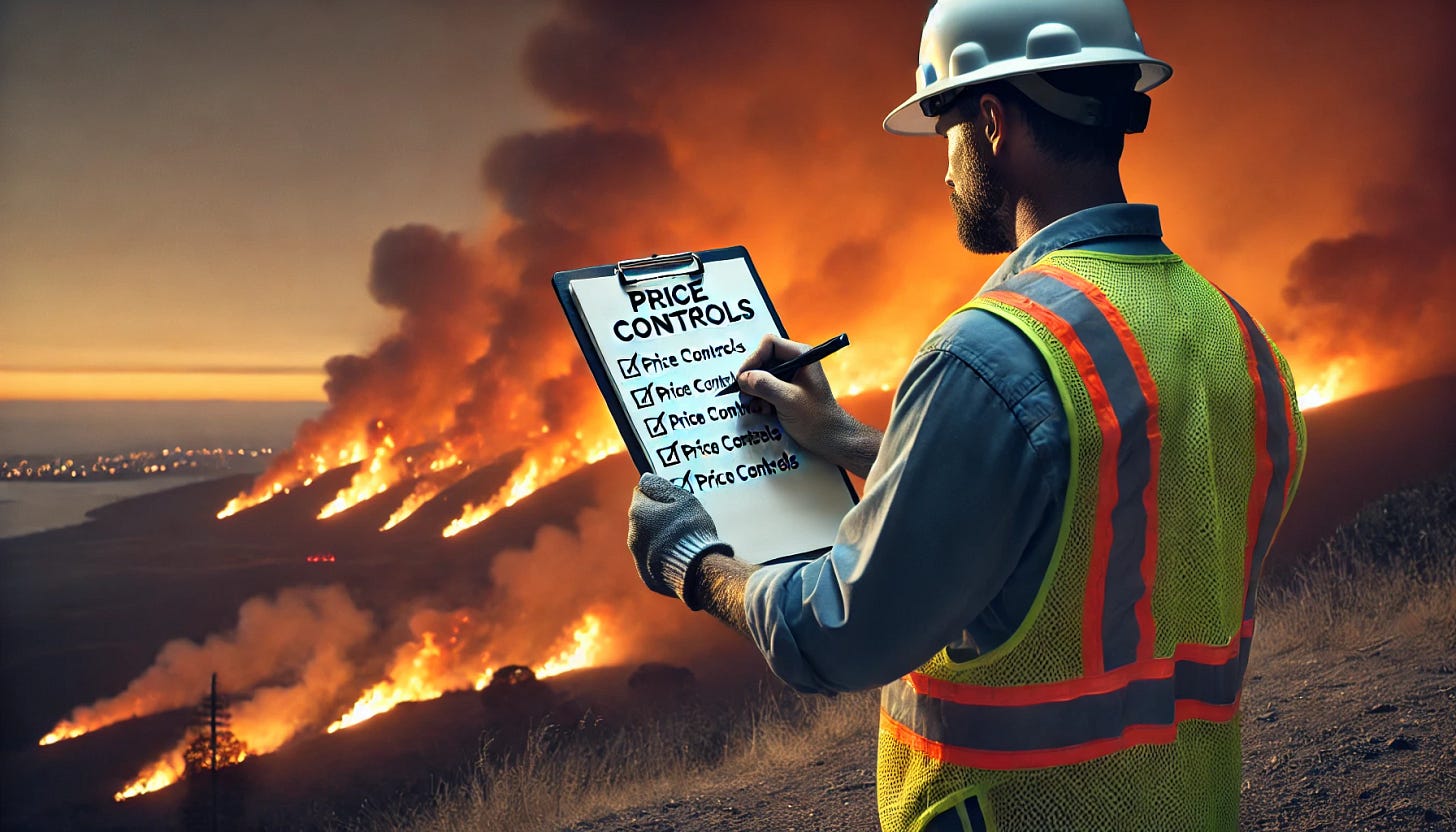On January 7, 2025, Governor Gavin Newsom declared a state of emergency in Los Angeles and Ventura counties due to multiple wildfires, including the Palisades Fire. California faced unprecedented wildfires, particularly in the Los Angeles area, leading to catastrophic damage and significant economic losses. AccuWeather's preliminary estimates placed the total damage and economic loss between $250 billion and $275 billion, a range that surpasses the entire 2020 wildfire season. Insurance companies anticipated losses of up to $30 billion, as reported by ABC News. The fires destroyed over 10,000 structures and resulted in at least seven fatalities (AP News). A combination of factors fueled the January 2025 wildfires in Southern California: prolonged drought, high temperatures, and dried-out vegetation created ample fuel for fires. Strong Santa Ana winds, gusting above 80 miles per hour, further exacerbated the situation by rapidly spreading flames. The combination of these elements resulted in one of the most devastating wildfire events in California's history. What’s the connection between the economic damage of the California fires and price controls?
State-imposed price controls on home insurance have significantly contributed to insurers withdrawing fire coverage in California. Due to regulatory restrictions, insurance companies have been unable to adjust premiums to reflect the growing wildfire risks, leading many to exit the market entirely. If prices can’t adjust, the quantity will, in this case, be the quantity of insurance coverage. For instance, State Farm ceased insuring new properties in high-risk areas and dropped around 30,000 homeowners, leaving many to resort to the California FAIR (Fair Access to Insurance Requirements) Plan. Both rent and home prices in Los Angeles have surged as affected homeowners scramble for alternative housing. Meanwhile, state regulators have imposed strict mandates, such as requiring insurers to provide advanced payments to wildfire victims and delaying necessary premium increases. As Steven Greenhut highlights in his testimony at R Street, these regulations have disincentivized insurers from operating in the state, exacerbating the housing and insurance crises rather than mitigating wildfire risks.
California’s regulatory environment has already placed excessive burdens on insurers, leading many private companies to scale back coverage or exit the market entirely. This has left the state’s FAIR Plan a last-resort insurance option, as the only coverage available for many homeowners. This situation raises questions about who ultimately bears the financial burden of rebuilding. The California FAIR Plan, the state's insurer of last resort, is currently facing significant financial strain due to the recent wildfires. Newsweek reprots that the “FAIR Plan was not prepared to face the deluge of enormous damage claims made by Californians who lost their homes to the fires. According to Evercore ISI data reported by Fitch Ratings, the FAIR Plan's estimated losses from the fires are about $6 billion, but the insurer had only $2.6 billion in reinsurance and roughly $200 million in surplus capital as of the most recent March 2024 FAIR plan disclosures.” A $1 billion bailout to help the FAIR Plan is in place, where “Californians will be asked to shoulder only half of the cost of the bailout, while the other half will be taken on by insurance companies under an agreement reached last year.”
If a bailout occurs at the federal level, then all U.S. taxpayers, including those in other states like Texas and cities like El Paso, would be contributing to the cost of wildfire recovery in California. The federal government typically reimburses states for wildfire recovery costs, meaning that taxpayer dollars from across the country help fund rebuilding efforts, even in areas that may not face the same wildfire risks. Under federal disaster aid policies, California can receive a 100% reimbursement from the federal government for funds spent on recovery within 180 days of a major fire event. Additionally, taxpayers in affected areas qualify for tax relief, such as extended filing deadlines and exclusions of certain relief payments from gross income. This means that while California residents benefit directly, taxpayers nationwide end up covering the costs through federal funds.
As the large wildfire claims in places like Los Angeles or Ventura overwhelm the FAIR Plan, all insurance companies in California are required to contribute to its funding, a cost that is then passed on to policyholders across the state. Additionally, the FAIR Plan's financial instability has prompted rule changes, allowing insurance companies to pass on substantial disaster rebuilding costs to their customers through increased premiums. This development further highlights the systemic issues within California's insurance framework. Without reforms that allow market-driven solutions to take effect, California’s approach to wildfire recovery may continue to make housing and insurance less accessible in the long run.
Prince Acheampong | Research Assistant | poacheampong@miners.utep.edu
The views represented here are those of the author and do not represent the position of The University of Texas at El Paso or the Center for Free Enterprise.






